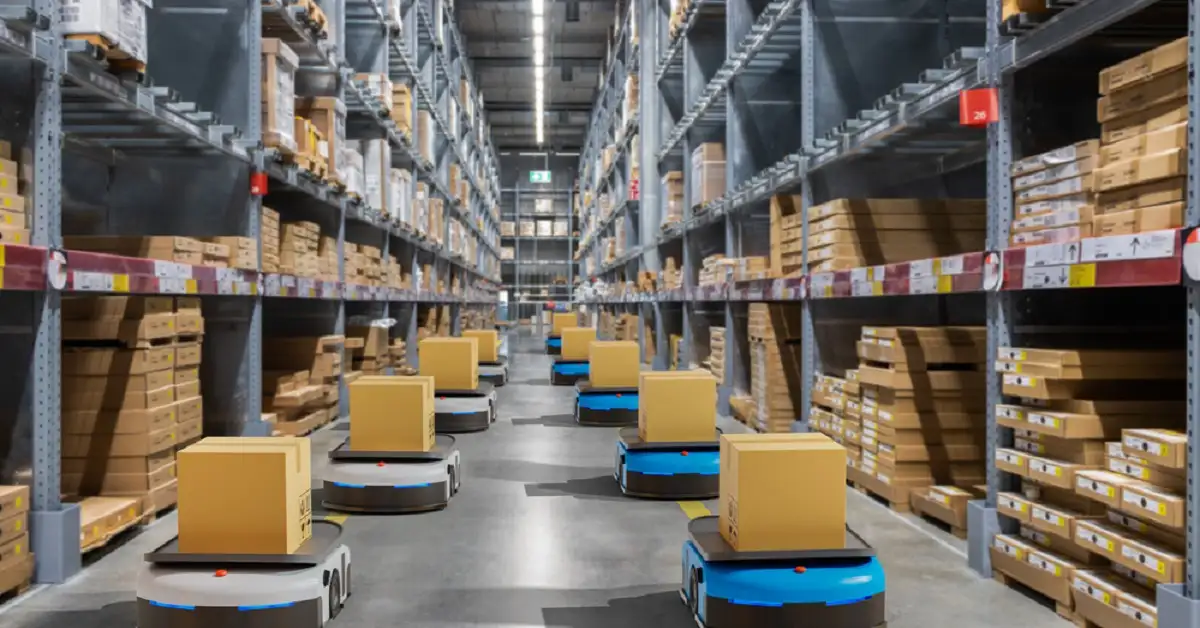Smart Warehousing: Is Reshaping Inventory Management

In today’s competitive business landscape, speed, accuracyand efficiency in inventory management can make or break a company. As consumer expectations grow more demanding and global supply chains become increasingly complex, traditional warehousing methods are no longer enough. Enter a tech-powered revolution in the logistics world that’s reshaping how goods are stored, trackedand moved. It’s smart warehousing.
The Rise of Warehouse Automation
Automation in warehouses is about more than replacing human labour and cutting headcounts. It enhances productivity, reducing error rates and optimises space. From robotic picking arms and automated guided vehicles (AGVs) to conveyor belts that sort packages with pinpoint precision, the modern warehouse is a far cry from the manual operations of just a decade ago. These technologies work together to reduce picking times, manage high-volume SKU environmentsand even adapt to last-minute order changes.
What once took hours to accomplish now happens in minutes, thanks to real-time data analysis and seamless integration between warehouse management systems (WMS) and enterprise resource planning (ERP) platforms. This level of automation not only improves operational speed but also allows for better inventory forecasting and reduced holding costs.
Data is the New Forklift
One of the most significant changes in smart warehousing is the way data informs every decision. Sensors, barcodes, RFID tagsand IoT devices now gather and transmit data throughout the supply chain, offering unprecedented visibility. Inventory is now monitored down to the individual item. Managers can instantly locate stock, predict demand trendsand optimise restocking schedules with far greater accuracy.
Predictive analytics driven by AI can now suggest the most efficient layout for fast-moving items, minimising travel time inside the warehouse. This data-centric approach also extends to maintenance schedules for machines, reducing unexpected downtime and keeping workflows uninterrupted.
The Role of Sustainable Infrastructure
As smart warehousing technology advances, companies are also rethinking the physical components that support these systems. Energy-efficient lighting, modular racking systemsand environmentally responsible materials are becoming standard in modern warehouses. Businesses are recognising that smarter materials contribute to both cost savings and environmental goals.
For example, many companies are choosing to upgrade their storage and transportation materials to more durable and reusable options. One such shift includes the decision to buy plastic pallets instead of relying on traditional wood. Plastic pallets are not only more hygienic and longer-lasting, but they also integrate better with automated systems due to their uniform dimensions and consistent quality. This change may seem minor, but in a smart warehouse environment, even the smallest upgrades can significantly enhance efficiency and throughput.
Challenges and Considerations
Of course, implementing smart warehousing solutions isn’t without its challenges. The upfront cost of automation technologies can be significant,and not all warehouses are immediately ready to support full-scale digital transformation. Legacy systems, lack of technical expertiseand resistance to change can slow progress. Additionally, ensuring cybersecurity across connected devices is a growing concern, as data integrity becomes increasingly vital.
However, the long-term return on investment (ROI) of automation is hard to ignore. Companies that embrace smart warehousing are often rewarded with faster order fulfilment, lower labour costs, improved accuracyand greater customer satisfaction. In an era where delayed shipments and stockouts can damage reputations, the ability to predict and execute with precision is more valuable than ever.
Looking Ahead
As technology continues to evolve, smart warehousing will only become more advanced. With the integration of machine learningand next-gen robotics, the future warehouse may look more like a data centre with storage racks than a traditional industrial space. Businesses that invest in automation now laying the groundwork for a supply chain that’s resilient, responsiveand ready for whatever comes next.